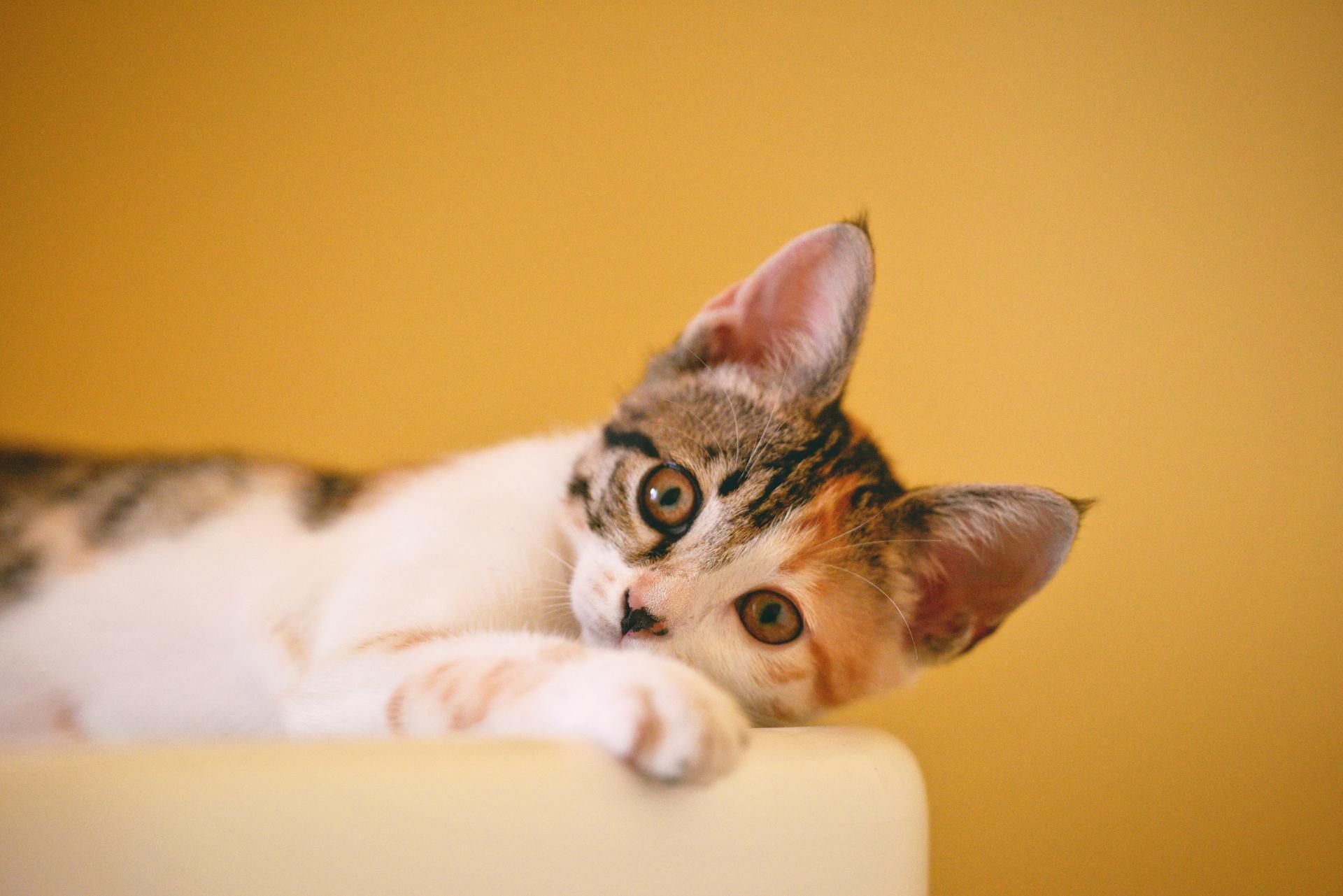ABIB BIO-TECHNOLOGY CO., LTD.
REMIND
Little reminder of love

[6 kinds of signals to determine whether your furry child’s health is causing an alarm! 】
Ms. Chen's furry baby Neo is usually a lively young terrier with a strong appetite. However, recently he has become a bit abnormal. Not only is he more "quiet", but he is also extremely clingy. Ms. Chen was very happy about this change at first and thought that Neo Europe has become mature and stable.
Unexpectedly, within a few days Neo stopped eating at all, not even his favorite chicken. Ms. Chen urgently took Neo to a nearby veterinary clinic. An examination revealed that Neo was infected with pyrozoites and his condition was very serious. Without an emergency blood transfusion, it might be life-threatening.
----------------------------
A minor illness will not become serious, but careful observation is required
The veterinarian told Ms. Chen that the dog's condition had become very serious if it refused to eat. If it had been discovered a few days earlier, the situation would not have been so difficult. Ms. Chen was also very upset because of this, hoping that if she had discovered Neo's abnormality earlier...
"Cats and dogs at home are like babies. They can't speak to express what's wrong with them. They can only rely on their owners to observe carefully." Yang Jingyu, former chairman of the Veterinary Medical Association and director of Yang Animal Hospital, said that early detection of pet illness can help Signal for help and get medical treatment as soon as possible, so that a minor illness will not turn into a serious illness.
Liu Jinming, director of the Small Animal Surgery Department of the National Taiwan University Animal Hospital, said that appetite, energy, excrement and abnormal behavior are the most important warning signs to determine whether the furry child at home is sick, especially appetite and lack of energy. Once the pet at home appears abnormal, , should be taken to a doctor as soon as possible.

Signal 1. Loss of appetite
Many cats and dogs often have symptoms of loss of appetite when diseases occur. For example, if pets are infected with infectious diseases such as scorch worms, colds and fevers, their food intake will be greatly reduced, or even they will not eat at all.
However, a pet's loss of appetite does not necessarily mean that it is sick. Liu Jinming said that sometimes changes in the environment or seasonal changes can also cause pets to have a loss of appetite. Especially in the sultry summer, pets may lose interest in food due to weather changes. There is a shortage of food, or the owner has changed the feed and the pet is picky and refuses to eat.
So how can you tell whether your baby's poor appetite is due to illness or other factors? Liu Jinming said that if your pet only has a loss of appetite but is still in good spirits, you can try to improve the environment. For example, if the temperature is too high, you can let your pet use an electric fan or air conditioner. To determine whether the pet is a picky eater, you can test it with the pet's favorite food, such as chicken, beef, etc. If the pet only eats its favorite food and does not eat feed, it is a picky eater. problem.
But if you are very unsure, it is best to take it to a nearby veterinary clinic for diagnosis to avoid delaying medical treatment.
Signal 2: listlessness
When pets are unwell, they may become weak and tired just like people. If your pet is usually lively and active, but suddenly becomes lethargic or feels anxious, especially if it is accompanied by vomiting, diarrhea or loss of appetite, it may be a warning sign of illness.
Signal 3. Abnormal excrement
Excretion is also an important basis for judging whether a pet is sick. The frequency of excretion of furry children is generally the same as that of humans. 3 times a day to 1 time every 3 days is considered normal. Formed, yellowish-brown excretion is best. If it is not formed, is soft, or is dark in color or even bloody, you should see a doctor as soon as possible.
In addition to feces, urine is also very important to judge. Yang Jingyu said that generally speaking, the normal urine of cats and dogs should be light yellow, and the color will be darker when the weather is hot in summer; but if it appears brown, it means there is a hematuria problem. If the owner finds it difficult to distinguish with the eyes, he can use a paper towel to dip the urine. If there is pink or reddish color on the paper towel, it means there is blood in the urine.
The normal frequency of urination for pets is about three times a day. If the frequency of urination is too much, it may be a symptom of poisoning; if it is too little or if the urination is a little in the east and a little in the west, it may be a precursor to urinary tract disease.
Dog urine is easier to observe than cat urine. Cat urine clumps in the cat litter, making it harder to judge whether it is sick or not based on the color and urine volume. Yang Jingyu said that urinary tract problems in cats are actually more common than in dogs, so owners should pay attention every day to see if there are any abnormalities in the cat litter compared with usual days.
For example, if the clumps in the cat litter are smaller than usual, it means that the urine volume is reduced; or if there are significantly fewer clumps, it means that the cat urinates less often and may have urinary tract problems.
Signal 4. Panting
Constant wheezing and wheezing are also signs of illness in pets. Especially wheezing even when sitting or lying down, accompanied by coughing and lack of energy, may be a warning sign of heartworm infection, anemia, hypoxia or heart disease. News.
In addition, normal dogs and cats’ noses are slightly moist. Some people believe that as long as a dog or cat’s nose is dry, it means that the pet has a cold. In this regard, Liu Jinming said that simply looking at whether a pet's nose is moist cannot be the only basis for judging whether a dog or cat has a cold; sometimes the weather may be drier and the nose may be temporarily dry, so it is still necessary to comprehensively observe the spirit , appetite and other factors, and then make a judgment.
If the nose is so moist that it drips, it means that the pet may have a cold or other upper respiratory tract diseases; if nasal pus flows out, or even yellow pus appears, it may be a sign of tracheal inflammation.
Signal 5. Mouth and abdomen appear pink
The weather is hot in summer, and if your furry child doesn't get enough water, he or she may suffer from heat stroke. Yang Jingyu said that if the oral mucosa and abdomen appear pink or even dark red, it is likely to be heat stroke. If a dog suffers heat stroke at home, the owner can first run cold water to cool down, replenish water, and seek veterinary assistance.
Signal 6. Abnormal behavior
Sometimes, the help-seeking behavior of cats and dogs is relatively hidden. Therefore, Yang Jingyu said with a smile, "Cats and dogs should not be raised like pigs. Owners should not just feed them, but also interact closely with the pets at home, such as brushing their fur. , and rub it with it", so that you can discover the unusual things about your pet as early as possible.
For example, Yang Jingyu said that pets that whine abnormally and continuously, or have unknown black spots or lumps on their bodies, may be signs of illness. There are also some dogs and cats with neurological abnormalities in their brains that may cause them to constantly bump into walls or head against walls.
In addition, if your pet suddenly loses a lot of weight, you should not take it lightly. If you lose 10% of your body weight within a month without special weight loss, it is likely to be a symptom of chronic diseases such as diabetes, and owners should pay special attention to it.
However, owners should not be too nervous if they find that their precious cats or dogs at home have the above symptoms. Liu Jinming said that the symptoms of pet illness need to be comprehensively evaluated. The occurrence of warning signs does not mean that there is absolutely something wrong with the body; and as long as early detection and treatment are carried out, pets at home can still be restored to health.

But do you have to wait until your furry child shows symptoms before seeking medical treatment? Is it impossible to do preventive maintenance on a daily basis?
Yabi Biotech's "Pet Food Storage Series", "Good Health Series" and "Premium Resistance Series"!
#lossofappetite-so appetizing
#Mental fatigue- Bodybuilding diet
#Abnormal excretion-good intestines
#pant-breathe well
#Skin allergy-good skin and hair
#Abnormal behavior - Bao Kangli D, C
Reference link: https://www.businesstoday.com.tw/article/category/80731/post/201806110042/



